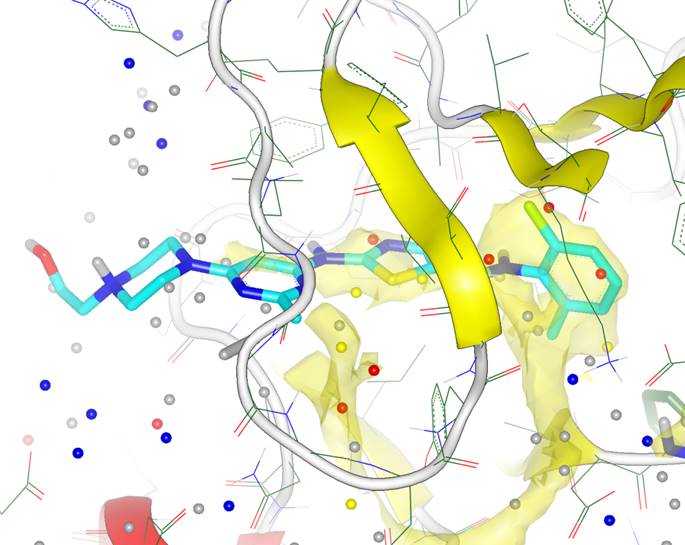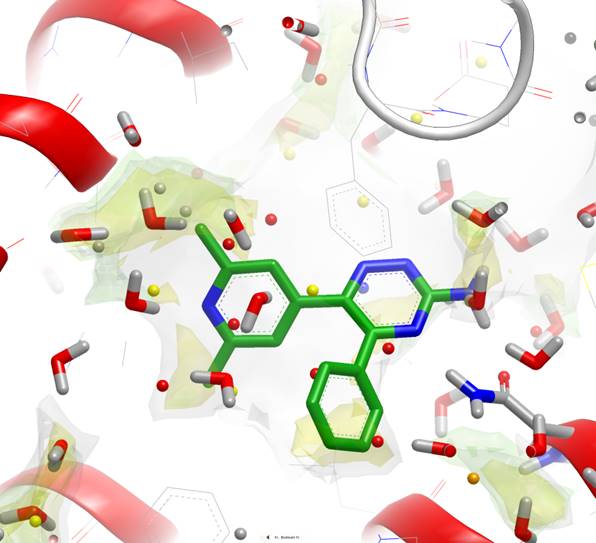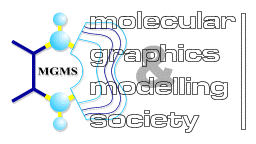
|
Modelling Water in Biological SystemsA Cutting Edge Approaches to Drug Design Symposium |

|
| School of Oriental and African Studies, Thornhaugh Street, Russell Square, London, UK. | ||
| Friday, 28th March, 2014. |
| Home | Speakers | Schedule | Registration | Travel | Sponsors |
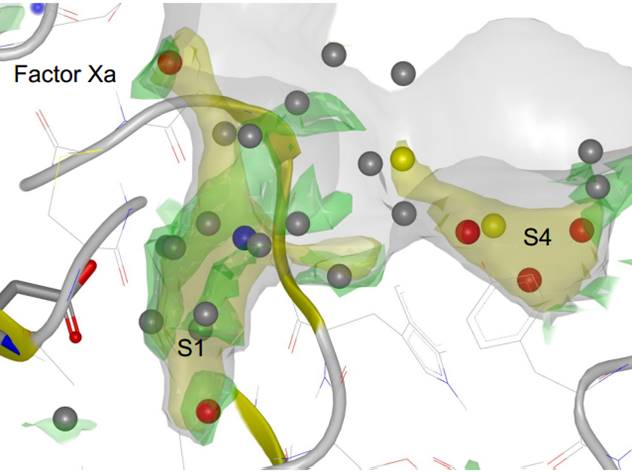
|
Water molecules can be considered to be the third dimension in understanding ligand binding and kinetics after the protein and the ligand, and are key for 'high end' design. Waters are increasingly being implicated in many aspects of ligand binding including kinetics. Water mediated interactions of ligands with receptors have always been considered important, and can be critical, but without X-ray experimental data are often ignored. Binding energy changes from just the perturbation of the water network can explain SAR not evident by looking only at a ligand-protein complex. A key binding energy component for drugs is the displacement of 'unhappy' (i.e. would significantly prefer to be in bulk solvent) waters, that are often in lipophilic hotspots, and this can be used as a key part of a druggability analysis. Computational approaches to generate and score water networks are now available, with a range of time required; ideally we would be able to create and score water networks in real-time for ligand design and binding mode analysis. Approaches in commonly used software include WaterMap (Schrodinger), SZMAP (OpenEye), WaterFLAP (Molecular Discovery) and 3D-RISM (Chemical Computing Group). In this conference, organised by Jon Mason, Shozeb Haider and Chris Richardson as part of the Cutting Edge Approaches to Drug Design (CEADD) series of symposia, we focus on recent progress in the understanding of water molecules in biological systems, including implications for drug design.
The organisers would like to thank the sponsors of this meeting for their generosity. |
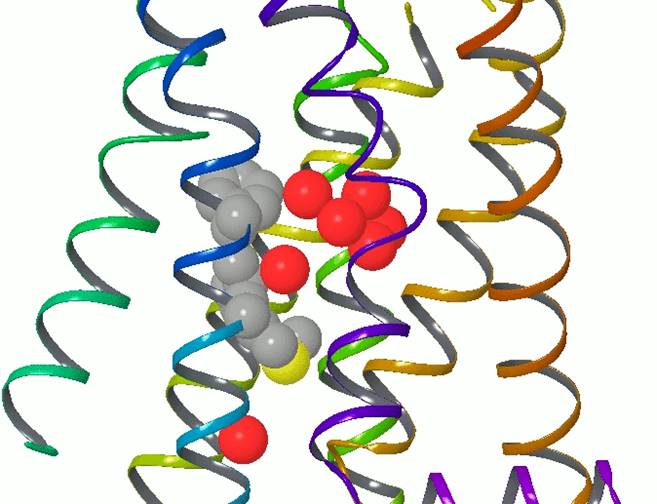
| ||||
